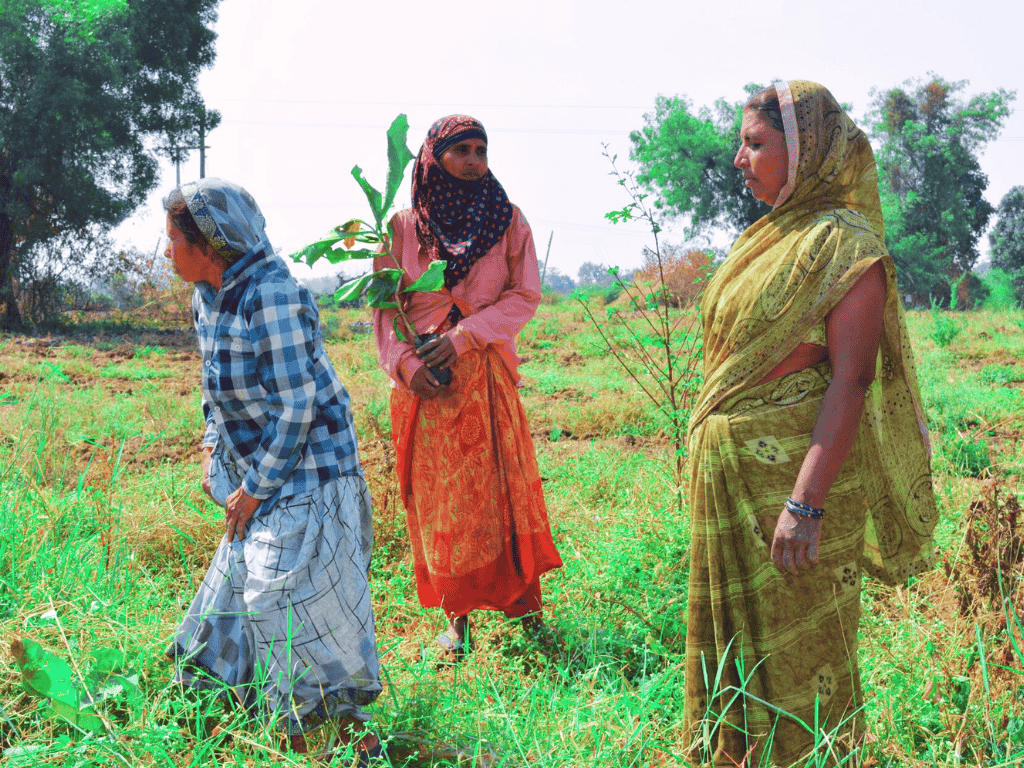In the fragile quiet of a Madhya Pradesh dawn, where fields once lay fallow and despairing, there now stands an army of trees. Teak, bamboo, guava, neem. Saplings planted not just into the earth but into the stubborn hearts of farmers weary of promises that wither. Twelve million trees, whispering stories of reclamation, resilience, and redemption.
And yet, this is not just about trees, nor even the 18,000 farmers tending them. It’s about a world desperate for balance, gasping under the weight of its own excesses. It’s about the carbon credit market—a peculiar beast borne of necessity, economics, and perhaps, a flicker of guilt.
The Global Carbon Credit Hunger
Here’s the irony of our time: corporations, those faceless entities of consumption and combustion, are scrambling to undo their mess. Or at least, to pay for it. The carbon credit market, once a fringe idea dismissed by cynics, is now a $270 billion juggernaut, growing each year like wildfire in reverse—consuming emissions instead of igniting them.
But credits are not conjured out of thin air. They’re earned. And this is where IMPCA steps in, wielding nature as both sword and shield.
Planting Trees, Growing Futures
IMPCA doesn’t plant trees to soothe its conscience or slap logos on glossy reports. It does so with meticulous intent. Its projects, Verra-certified to meet the gold standard of credibility, serve as lifelines to corporations navigating the labyrinth of carbon neutrality.
But these credits are more than math, more than the measured absorption of CO2. They’re stories etched into the soil. In Madhya Pradesh, farmers who once relied on unpredictable rains now see hope sprout in teak and neem. The land’s stubborn barrenness has given way to a green promise, its transformation as real and tactile as bark under a child’s hand.
And here lies the dual brilliance of it all: the land is not taken away. It remains theirs—unused agricultural stretches reborn into revenue streams. The future, for once, doesn’t feel like a betrayal.
Why Companies Look to Trees
For corporations, these credits are more than compliance; they’re currency in an unforgiving world. Shareholders demand sustainability reports. Consumers prefer brands that promise greener choices. And governments, wielding sticks in the form of regulations, leave no room for excuses.
Tree plantation projects like IMPCA’s become a balm for corporate egos and ledgers alike. Each sapling grows into a number on a spreadsheet, an antidote to emissions that factories and offices spew with abandon. But they’re also a tangible act of restitution, one that can’t be dismissed as mere greenwashing.
A Bigger Truth: Restoring the Unseen
Beneath the spreadsheets, beyond the rhetoric, lies the unspoken truth of nature-based solutions. They are not just climate interventions. They’re reparations. They’re healing.
When IMPCA plants mangroves in West Bengal, it does more than protect coastlines. It rebuilds ecosystems that crabs, fish, and birds once fled. When it nurtures teak in Madhya Pradesh, it does more than store carbon. It restores a dignity the land had forgotten.
The Way Forward: Participation, Not Penance
For companies seeking carbon credits, this is not about buying indulgences for their sins. It’s about participating in a collective recovery. IMPCA’s model doesn’t merely offer compliance; it offers connection. It links corporations to farmers, cities to villages, boardrooms to forests.
And in that linking lies the potential for something extraordinary: a world that stops apologizing for its greed and starts acting on its hope.
The Trees Will Tell Our Story
Years from now, these trees will outgrow their sapling selves. They’ll bear fruit, shade, and silence. They’ll witness laughter, labor, and lives rebuilt. They’ll stand as witnesses to a time when humanity, in its desperation, remembered to plant something other than progress.
And if we’re wise enough to listen, their rustling leaves will remind us that growth is not always about more. Sometimes, it’s about better. About balance. About being rooted again.


